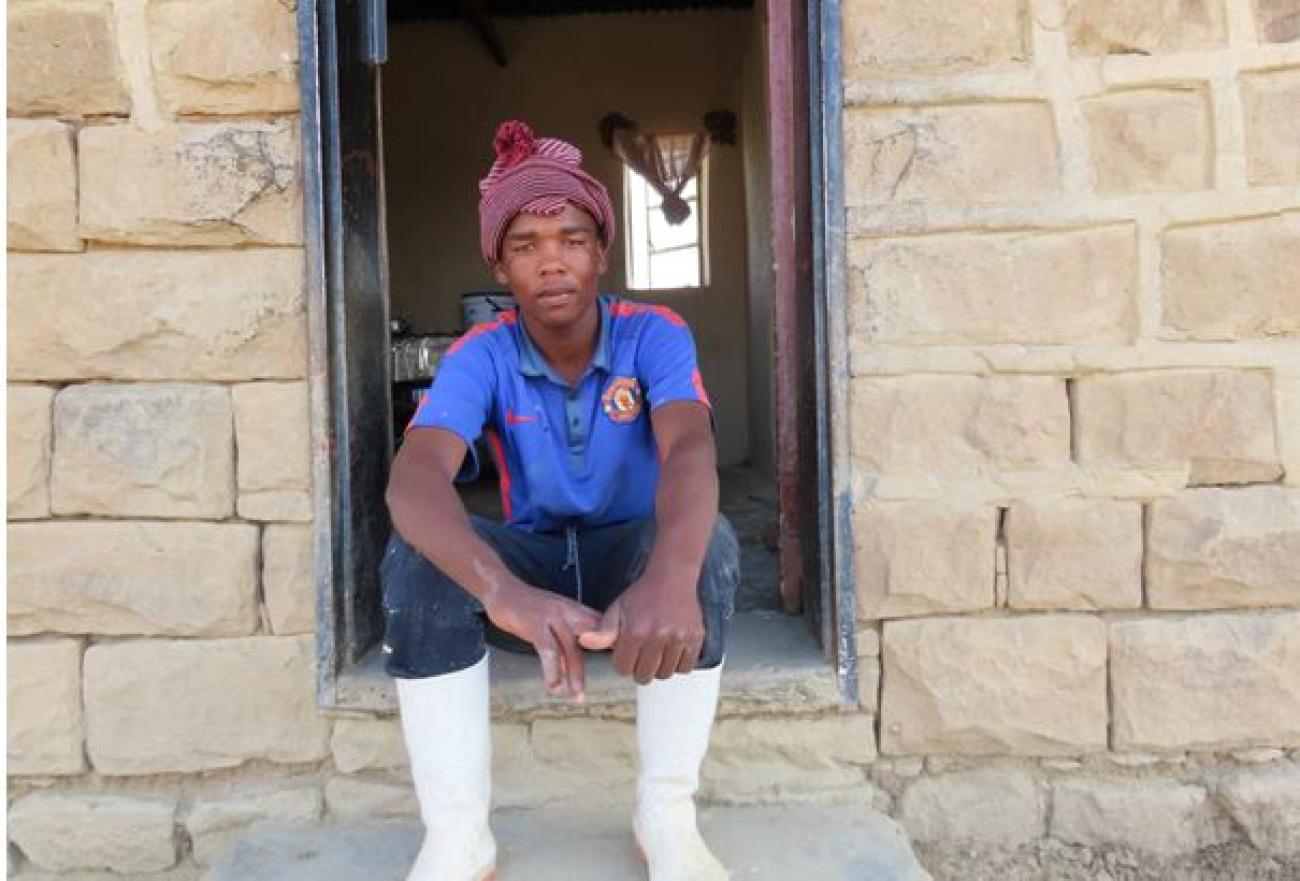Humanitarian assistance to the most vulnerable

In support of the Government, WFP assist some 45,000 vulnerable people in two southern districts over a period of six months.
The rocky road dips down to cross a small riverine, where a large stream would normally be flowing, snaking its way down to the mighty Makhaleng river. Recently this crossing is characterised by dry, silty sand that causes tyres to slip and slide and animal hooves to sink into the river parched riverbed. Lesotho has been suffering through concurrent years of drought since the El-Nino in 2015/16 and the current 2018/19 agriculture season was marked by late onset of rains. Majority of the population live in rural areas and are dependent on agriculture for all or part of their livelihoods and by November 2018 the IPC estimated that 19% of Lesotho’s population was food insecure. These most affected people needed immediate humanitarian assistance to save lives by addressing immediate food gaps among the vulnerable households.
In January 2019, WFP initiated a six-month emergency response intervention in the two hardest hit districts of Mohale’s Hoek and Quthing. Across the dry riverine and over the escarpment lies, Moralleng village, overlooking a valley of barren fields, backdropped by the rugged Maluti mountains. Tśepo Motetebe, now 20, found himself in the undesirable role of breadwinner and head of his family’s household at 17 years old. He was born in the village, the eldest of five children but was forced to drop out of high school to take care of his siblings, one of whom has a disability, after both of his parents passed away. Poverty, the HIV and AIDS pandemic, and food insecurity are currently the biggest threat to the survival, care, protection and development of children in Lesotho.
Tśepo receives USD 45 monthly through WFP’s emergency response that targets marginalized OVC households. Households were identified by working with the Ministry of Social Development, the DMA and schools where WFP supports the MOET implement the national school feeding programme. In Tśepo’s case, community participatory targeting assisted, as a local village councillor identified the family. Tśepo was struggling to keep his family afloat by working as a shepherd, being paid a small stipend by neighbouring families for taking their livestock out to feed in the surrounding pastures.
However, as the drought continued, the pastures waned, and work became difficult to find. Subsequently his younger brother was also forced to drop out of high school due to financial constraints and now also stays home with Tśepo trying to find any odd jobs to supplement the family’s income. Before receiving assistance from WFP, their only stable income was the monthly USD 60 that they received through the Government’s social grant system. “The money was not enough to address all our needs and buy household requirements”, explained Tśepo, that two of his siblings are still in school and his disabled sister requires more support than he is able to provide with a small income.
WFP Lesotho implemented a combination of cash and commodity voucher assistance. Each household received USD 45 of which USD16 voucher was for maize meal and USD29.00 cash was for other household requirements. The cash transfers were via mobile money and a commodity voucher program was administered through local retailers to provide in-kind food assistance. “Thanks to WFP, I no longer use the social grant money to buy food and this has allowed me to buy clothes and school uniforms for my siblings while also seeing to other household requirements. The assistance has really helped me and my siblings during this drought. I am hopeful one day I will have a decent job that will allow me to provide for my family”, he said. Over the six-month emergency response, WFP assisted some 45,000 vulnerable people.



